Este Boletín de la Unidad Regional de Estudios y Gestión del Hábitat, quiere ser un lugar de encuentro entre todos los que estamos diseñando y construyendo Arquitecturas de Tierra. Vamos a dialogar con las casas de tierra que hoy se construyen en la región. Queremos pensar juntos en las posibilidades futuras de la tierra, reflexionar sobre ese patrimonio intangible del cual nos queda poco y evaluar este presente de la construcción con tierra.
Vineyard Residence
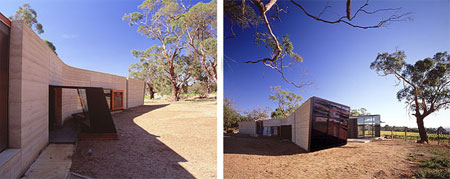
The Vineyard Residence, by John Wardle Architects, combines rammed earth with heavy timber framing and slim steelwork in the palette of materials. The design was awarded best residential building by the Royal Australian Institute of Architects.
Adobe: Building and Living With Earth
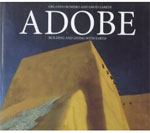
Adobe: Building and Living With Earth by Orlando Romero and David Larkin, is a picture-rich study of the history, technology, and dignified, sculptural beauty of adobe structures. The oldest of building materials, adobe bricks are made from mud and straw and have been used in Africa, the Iberian peninsula, and all across the Southwest and Mexico. Surprisingly durable if maintained, adobe constructions can last for centuries. Romero and Larkin explain brick-making and remudding techniques, showing both archival photographs of Native Americans at work on their pueblos and photographs of contemporary builders. They also document some of the Southwest’s most famous adobe churches and pueblos, such as the San Francisco Mission Church at Ranchos de Taos and the wondrous mesa-crowning Acoma Pueblo, as well as a selection of lesser-known buildings. Special attention is paid to interior decorative detail and to adobe’s intrinsic connection to the landscape.
Buildings of Earth and Straw
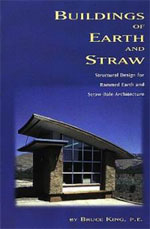
Buildings of Earth and Straw: Structural Design for Rammed Earth and Straw Bale Architecture by Bruce King chronicles the possibilities and realities of straw bale and rammed earth construction. Buildings of Earth and Straw fills in the gaps for professional builders, contractors, engineers, inspectors, lenders, and architectural students. It includes special construction requirements of earth and straw, design capabilities and limitations of these materials, and documentation of testing data for use in addressing the concerns of officials. This book offers the nuts and bolts of rammed earth and straw bale building techniques, and why they are so spectacular, durable, and earth-friendly.
The Earth Construction Handbook
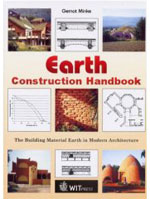
The Earth Construction Handbook by Gernot Minke provides a survey of applications and construction techniques, including physical data, and explains the materials specific qualities together with the possibilities of optimising these. The information given can be practically applied by engineers, architects, builders, planners, craftsmen and laymen who wish to construct cost-effective buildings which provide a healthy, balanced indoor climate.
Design Build University of Utah
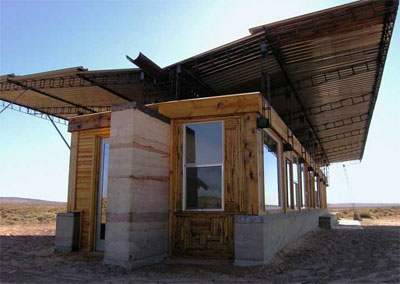
Building upon the vision of the late Samuel Mockbee and his Rural Studio, the mission of Design Build Bluff will challenge the perceived limitation os what can and should be done. Their most recent project is a house for Rosie, constructed of rammed earth. [ previously ]
West African Architecture
They are west Africa’s most exciting, ambitious buildings. Some of them have lasted 700 years, and they’re made of dirt.
The Wildlife Works EcoFactory
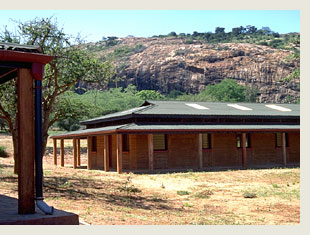
The Wildlife Works EcoFactory employs a team of eleven women sewing machine operators from the local community that were taught the skill of using modern electric sewing machines to produce Wildlife Works’ tees. To build the EcoFactory’s two buildings, we employed 150 local people for two years using Rammed Earth, and our construction team learned the skill of building thick, rammed-earth walls that keep the temperature constant and cool inside, no matter how hot it gets outside. The beauty of this eco-friendly solution is that it uses mostly soil from the site. [ Via African Architecture ]
The Adobe Association of the Southwest
The Adobe Association of the Southwest is an organization whose mission is to
champion earth construction of yesterday, today and tomorrow.
The Adobe Alliance
The Adobe Alliance is an organization committed to building low-cost energy efficient housing that is climatically and environmentally compatible and to fill widespread needs for sustainable, salubrious housing while enhancing the unique landscape of the Big Bend region of West Texas and other desert environments through the utilization of mud-brick as a primary material in these endeavors
